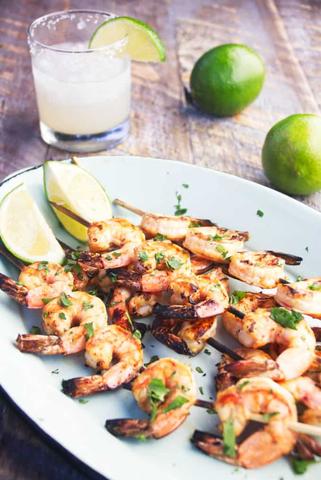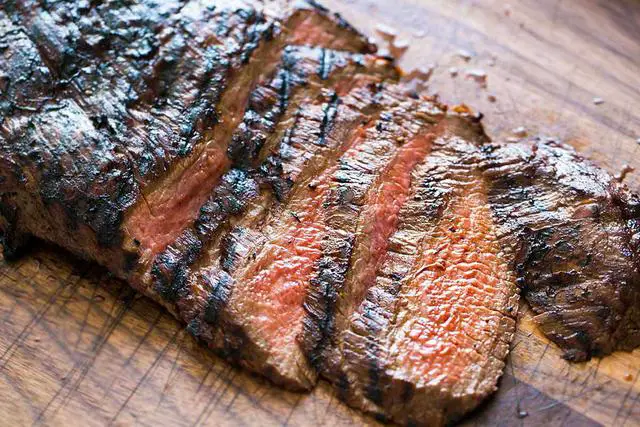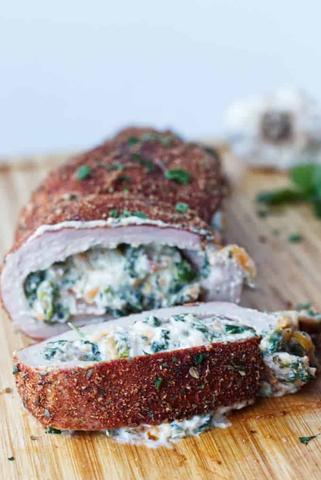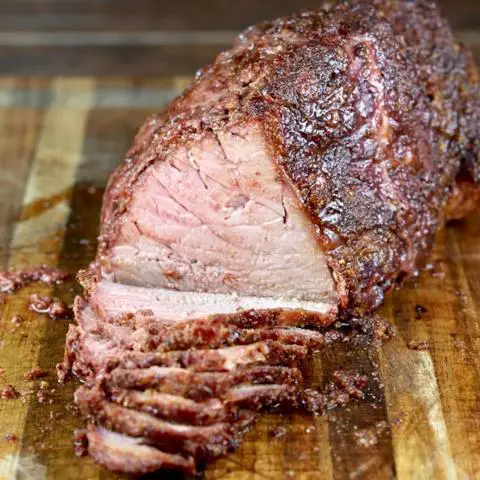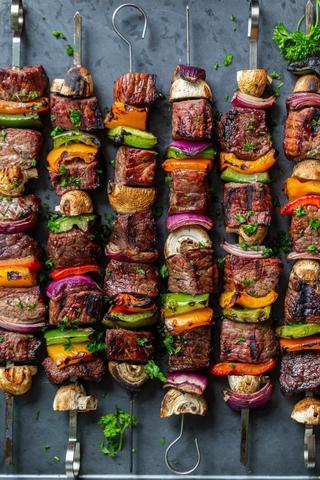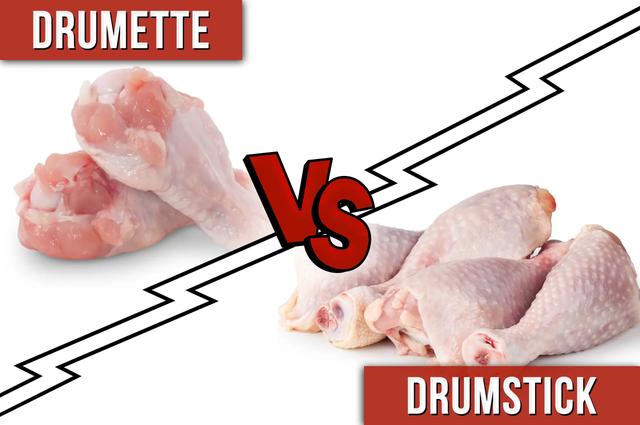
Introducing “Drumette”: Your Ultimate Guide to Finger-Lickin’ Chicken Delights! Get ready to savor the crispy, juicy goodness of chicken drumettes with our mouthwatering recipes, cooking tips, and flavor-packed marinades. Whether you’re hosting a party or simply craving a delicious snack, Drumette is your go-to resource for mastering this finger-lickin’ favorite. Let’s dive into a world of delectable chicken delights that will leave you wanting more!
Drumette vs Drumstick: Are They the Same Cut of Chicken?
The drumstick and drumette are not the same cut from a chicken. Anatomically speaking, the drumstick is the lower joint of the leg, whereas the drumette is the upper arm of the chicken wing. Personally, I find drumsticks to be the best part of the chicken. In terms of wings, I also tend to prefer wingettes as opposed to drumettes.

Drumsticks are the lower joint or “leg” of the chicken. They have a thicker end that tapers into a thinner end and connect to the upper joint or “thigh” of the chicken on one end and to the feet on the other end. On a chicken, drumettes – colloquially called “drums” – are the upper arms of the chicken wing. They typically have a thick end that tapers into a thinner end and connect to the breast on one end and to the wingette or “flat” on the other end.
The biggest reason people confuse drumettes and drumsticks is because their names are quite similar. However, if we break down their etymology, their names make more sense. The suffix “-ette” in “drumette” indicates a smaller version of something. So in this case, a drumette is simply a smaller version of a drumstick.
A major visual difference between drumettes and drumsticks is in the type of meat you’re eating – often referred to as “white meat” and “dark meat.” Dark meat contains more myoglobin and is comprised of slow-twitch muscle fibers used for extended periods of activity like walking or sitting. White meat, on the other hand, is comprised of fast-twitch muscles that require less myoglobin and use glycogen stored in muscles for energy.
There are a few differences worth mentioning between drumettes and drumsticks, including cost, fat content, and method of cooking. Drumsticks are generally cheaper than drumettes or wings. Drumsticks and wings are easy to cook and difficult to mess up. When cooking a whole chicken, the legs/thighs and wings cook faster than the breast. The ideal internal temperature for drumsticks and wings is around 190°F+, while the breast should be cooked until it reaches 160-162°F to account for carryover cooking.
In conclusion, drumettes and drumsticks are not the same cut of chicken. They have different anatomical locations and characteristics in terms of meat type, fat content, cooking methods, and temperature importance.
What are Drumsticks?

Drumsticks are the lower joint or “leg” of the chicken. They have a thicker end that tapers into a thinner end. The thick end connects to the upper joint or “thigh” of the chicken, while the thinner end connects to the feet. Drumsticks are irregular in shape and contain dark meat, which is comprised of slow-twitch muscle fibers used for extended periods of activity.
Drumettes, colloquially called “drums,” are the upper arm of the chicken wing. They also have an irregular shape, with a thick end connecting to the breast and a thinner end connecting to the wingette or “flat.” Drumettes are visually similar to drumsticks but are a smaller version. They contain white meat, which is comprised of fast-twitch muscles that require less myoglobin and rely on glycogen for energy.
The main differences between drumettes and drumsticks include their anatomical location on the chicken, the type of meat they contain (white meat vs dark meat), and their shape. Drumsticks are cheaper than drumettes or wings, making them a more affordable option. In terms of cooking, drumsticks and wings are easier to cook than other cuts of meat due to their forgiving nature. When cooked properly, drumsticks and wings have crispy skin and tender meat.
What are Drumettes?
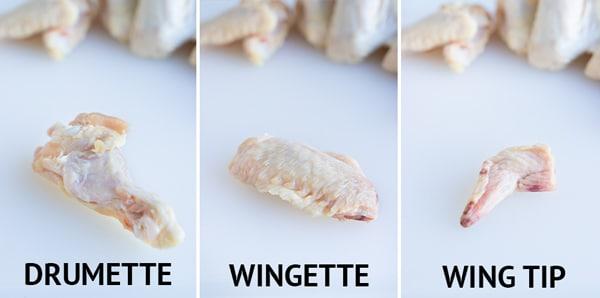
Drumettes are the upper arm portion of a chicken wing. They are commonly referred to as the “drum” and are distinct from drumsticks, which are the lower joint of the chicken leg. Drumettes have an irregular shape, with a thick end that tapers into a thinner end. The thicker end is connected to the breast of the chicken, while the thinner end is connected to the wingette or “flat.”
The main visual difference between drumettes and drumsticks is the type of meat they contain. Drumsticks, being part of the leg, consist of dark meat which contains more myoglobin. This myoglobin gives it a darker color. Dark meat is made up of slow-twitch muscles used for activities like walking and standing, requiring a consistent energy source like oxygen. On the other hand, drumettes are part of the wing and consist of white meat. White meat is made up of fast-twitch muscles that require less myoglobin since they are not used as extensively by chickens.
Due to their different compositions, drumsticks and drumettes require slightly different cooking methods and temperatures. Drumsticks, being darker meat with more connective tissue, benefit from longer cooking times at higher temperatures to break down collagen into gelatin and achieve tender results. It is recommended to cook drumsticks until they reach an internal temperature of 175-190°F (79-88°C). On the other hand, drumettes can be cooked at slightly lower temperatures since they contain less collagen. Most recipes suggest cooking drumettes until they reach an internal temperature around 165°F (74°C) for safe consumption.
In terms of fat content, drumsticks tend to have a slightly higher fat content compared to drumettes. This is due to the fact that dark meat generally contains more fat than white meat. However, the difference in fat content between the two cuts is relatively small and may not be noticeable in each individual piece. As for cost, drumsticks are typically cheaper than drumettes or wing sections (flats and drums) since they are more commonly available in grocery stores.
Overall, while drumettes and drumsticks may appear similar visually, they are distinct cuts from different parts of the chicken with variations in meat type, cooking methods, fat content, and cost.
The Main Confusion Lies in the Name of the Cuts
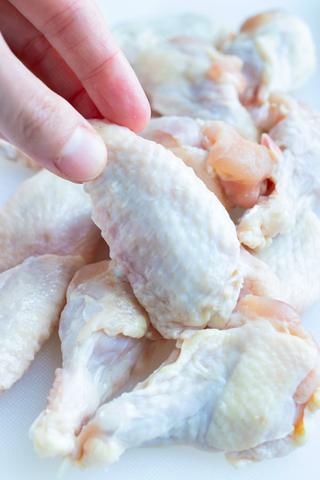
One of the main reasons why people confuse drumettes and drumsticks is because their names are quite similar. However, if we break down the etymology, the namesakes make more sense. Some etymologists believe that the word “drumstick” was used to describe the leg because phrases like “thigh” or “leg” weren’t polite words to use in the 18th century. Similarly, breast is replaced by bosom, thigh by upper joint, and leg by lower joint.
Visually, drumettes and drumsticks look quite similar, especially when the drumette is separated from the wingette. However, they are completely different cuts from the bird. The biggest difference between them is the type of meat you’re eating – often referred to as “white meat” and “dark meat.” Dark meat contains more myoglobin, which gives it a darker color compared to white meat. Dark meat is comprised of slow-twitch muscle fibers used for extended periods of activity like walking or standing. In contrast, white meat is comprised of fast-twitch muscles that require less myoglobin since they are not used as much.
There are a few notable differences between drumettes and drumsticks in terms of cost, fat content, and cooking method. Drumsticks tend to be cheaper than drumettes or wings (flats and drums). Additionally, drumsticks have higher fat content compared to drumettes due to their slower and more active muscle usage. When it comes to cooking method, both drumettes and drumsticks are easy to cook but require different internal temperatures for optimal results. Drumsticks should be cooked until they reach around 175-190F, while drumettes can be cooked to around 190F+ because of their higher fat content and collagen.
White Meat (Wings) vs Dark Meat (Drumsticks) Chicken
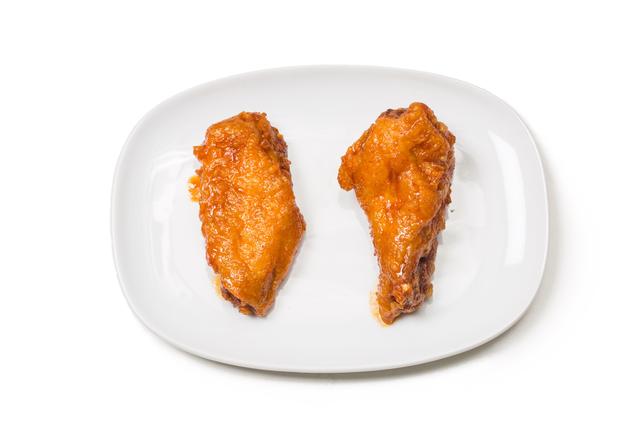
When it comes to chicken, there is a clear distinction between white meat and dark meat. The drumsticks, which are classified as dark meat, contain more myoglobin, a protein that stores oxygen in cells and provides muscles with the oxygen required for activity. Dark meat is made up of slow-twitch muscle fibers that are used by the bird for extended periods of time, such as walking and standing. On the other hand, wings, which fall under white meat, consist of fast-twitch muscles. Chickens use these muscles less frequently and therefore require less myoglobin. Instead, they rely on glycogen stored in muscles for energy.
The difference in myoglobin content gives white meat its characteristic color, while dark meat has a reddish hue. This disparity in color also affects the taste and texture of the meat. Dark meat tends to be juicier and more flavorful due to its higher fat content compared to white meat.
Major Differences Between Drumettes and Drumsticks

The main difference between drumettes and drumsticks is their anatomical location on the chicken. The drumstick refers to the lower joint of the leg, while the drumette is the upper arm of the chicken wing.
Visually, drumettes and drumsticks may appear similar, especially when the drumette is separated from the wingette. However, they are completely different cuts from the bird.
Another major difference is the type of meat you’re eating. Drumsticks are considered dark meat, while drumettes are considered white meat. This difference in color is due to the myoglobin content in the muscles. Dark meat contains more myoglobin and is comprised of slow-twitch muscle fibers used for extended periods of activity. On the other hand, white meat has less myoglobin and is made up of fast-twitch muscles that require less oxygen for energy.
In terms of cooking methods, both drumettes and drumsticks are easy to cook and hard to mess up. They can be smoked or grilled to perfection. However, it’s important to note that wings and drumsticks tend to finish cooking faster than breast meat on a whole chicken.
In terms of cost, drumsticks are generally cheaper than drumettes or wings (flats and drums). This makes them a more economical choice when buying chicken.
Lastly, there is a difference in fat content between drumettes and drumsticks. Dark meat like drumsticks tends to have slightly higher fat content compared to white meat like drumettes.
Cost of Drumettes and Drumsticks
Drumsticks are generally cheaper than drumettes or wings. This price difference is mainly because drumsticks are more commonly found in grocery stores, while drumettes are not as widely available. Even when sold together with the wing flats, drumettes tend to be more expensive. However, it is worth noting that pricing may vary depending on where you purchase your chicken.
Both drumettes and drumsticks are versatile cuts of chicken that can be cooked in various ways. They can be grilled, baked, fried, or even smoked. One popular method for cooking whole chickens is spatchcocking, which involves flattening the bird to ensure even cooking. Drumsticks and wings usually cook faster than the breast meat, making them a convenient option for quick meals.
When it comes to cooking poultry, temperature is crucial for food safety. The USDA recommends cooking chicken to an internal temperature of 165°F (74°C) to ensure that any harmful bacteria present in the meat are killed. However, for dark meat like drumsticks and wings, some people prefer cooking them to a higher temperature of around 190°F (88°C) for better texture and flavor.
In terms of fat content, dark meat like drumsticks and wings typically contain more fat compared to white meat like breast meat. This higher fat content contributes to their juiciness and tenderness when cooked properly.
Overall, while both drumettes and drumsticks come from different parts of the chicken and have their own unique characteristics, they can be equally delicious when prepared with the right cooking methods and temperatures.

Method of Cooking, Temperature Importance, and Fat Content
Drumettes and drumsticks require different cooking methods due to their anatomical differences. Drumsticks are best cooked using low and slow methods such as smoking or braising. The slow cooking allows the tough connective tissues in the meat to break down, resulting in tender and juicy meat. On the other hand, drumettes are typically cooked using high-heat methods like grilling or frying. The smaller size of drumettes allows them to cook quickly and develop a crispy exterior.
When it comes to temperature importance, it is crucial to cook chicken thoroughly to ensure food safety. Both drumettes and drumsticks should be cooked until the internal temperature reaches 165°F (74°C) according to USDA guidelines. This ensures that any harmful bacteria present in the chicken are killed.
In terms of fat content, drumsticks tend to have slightly higher fat content compared to drumettes. This is because dark meat generally contains more fat than white meat. The higher fat content contributes to the rich flavor and juiciness of drumsticks. However, it is important to note that both cuts can be enjoyed as part of a balanced diet when consumed in moderation.
Overall, understanding the differences between drumettes and drumsticks can help you choose the appropriate cooking method and appreciate the unique qualities each cut offers.
In conclusion, drumettes are a popular and delicious choice for chicken wings enthusiasts. With their meaty and tender texture, they offer a satisfying eating experience. Whether enjoyed as a snack or as part of a meal, drumettes are sure to please any palate.
Learn More About Grilling
If you want to learn more about grilling, check out these other helpful resources!


